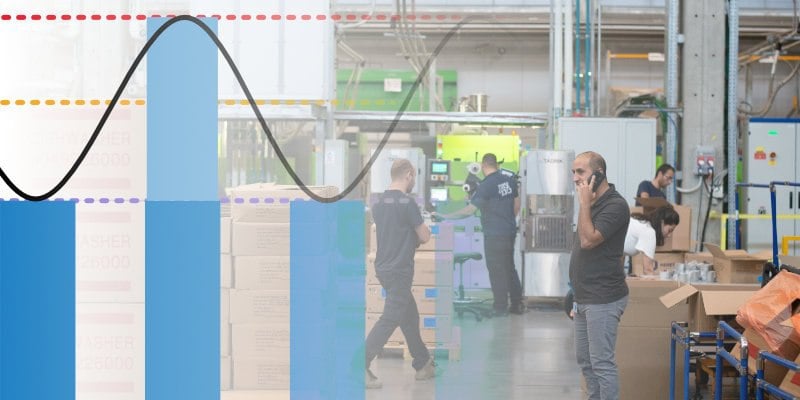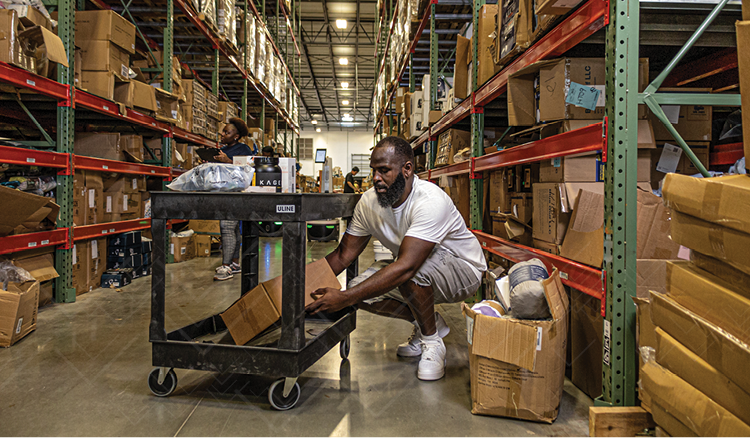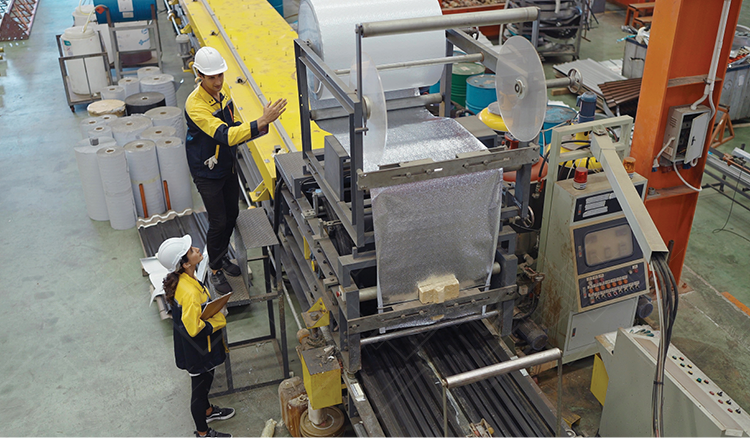What is On-Demand Labor?
On-Demand labor has emerged as a new labor model for manufacturing, logistics, and other supply chain operations. Many businesses are adopting this new way to adjust capacity in response to demand, but you might still be asking, what is on-demand labor, and what problem does it solve?
At Veryable, we preach the power of this model, because we’ve seen it reduce the costs of recruiting, hiring, and maintaining a workforce for companies needing to meet volatile demand. Our platform is an on-demand labor marketplace connecting independent workers with supply chain, manufacturing, and logistics businesses.
But this article won’t be about us or our product. Instead, you’ll learn how on-demand labor solves the capacity planning problem for companies facing demand volatility by empowering them to respond quickly to changes instead of overstaffing in anticipation.
What is On-Demand Labor?
Developed by former operations leaders, on-demand labor is a model that connects businesses to workers only when their work is needed. With access to labor on demand, you can maintain less full-time employees and still meet demand by quickly contracting qualified workers when demand rises. This empowers your business to spend less money on guesswork by enabling fast reactions to changes in demand.
Contents:
- Capacity planning challenges in the supply chain
- How on-demand labor solves the capacity planning puzzle
- How on-demand labor works
- When on-demand labor is a good fit
Capacity planning challenges in the supply chain
Planning capacity is often a guessing game. Sure, advanced forecasting solutions exist and often help close the gap between output and demand. But even with the best forecasting methods, some amount of uncertainty is impossible to avoid.
If you’re in the supply chain, your business is probably paying full-time employees who aren’t needed much of the time throughout the year, just so the floor of your labor supply is high enough to meet possible changes in demand.
Imagine this: you’ve forecast demand for the month and you have enough workers that you could handle a slight bump in demand. A few workers call out sick, and another few are on vacation. You approved their time off because their presence wasn’t make or break this month according to the forecast.
Even with these employees out, everything is smooth sailing, until you get a call that your orders just increased by 10%. The problem is, without those employees who were extra labor before, now you would have to pay overtime for the shifts needed to fill this order.
Your options here are essentially: pay overtime to existing labor, find new labor, or decline the order.
If you rely on your existing labor, you’re paying out vacation and overtime. This also assumes you can get those workers to come in for the extra shift.
If you search for new labor, it will also come at a cost. When you’re already paying a hefty sum to full-time workers, paying additional workers can be a necessary evil if you want to avoid paying overtime and potentially a costly increase in turnover.
If you decline the order, you’re leaving money on the table.
How on-demand labor solves the capacity planning puzzle
Now imagine this scenario going differently. With access to an on-demand labor supply, you’re staffed with the minimum number of full-time workers required to meet demand, based on your forecast. If anything goes wrong with your current full-timers, or your business needs change, you know you can pull from the on-demand labor pool to fill the gaps.

As you can see in the graph above, with on-demand labor you would only be paying the minimum number of full-time employees, knowing that you have access to flexible labor to meet demand as it changes.
Imagine the scenario outlined before, when you get the call that the order volume has increased by 10%, but this time with a more flexible labor solution.
With an on-demand labor model, your capacity is able to respond in real time to this change in demand. Now, your options are still the same as before: pay overtime to existing employees, find more labor, or turn down the order.
You don’t want to leave money on the table, so you don’t turn down the order.
You don’t want to pay overtime to an already maxed-out group of full-time employees, because there has been no cushion built into the schedule to save on labor costs.
So you activate the real advantage of an on-demand labor supply.
How on-demand labor works
With access to qualified independent workers, you can find labor on demand to help get your big order out within a couple days. But, you don’t have to lock into a long-term contract or hire a middle man.
It’s simple: you post a work opportunity, qualified workers bid on the opportunity, and you get to choose who works it. Combined with paying fewer full-time employees (which lowers your total cost), the flexibility of on-demand labor allows you to spend less money on guesswork and respond quickly to changes in demand.
If a few of your full-time employees can’t make their shift, you can fill those gaps quickly with on-demand labor too.
After you’ve decided who to give the work to, the workers you’ve made an agreement with will show up on the day of the operation to work. They will work until they complete what was agreed on, and then they will leave.
On the Veryable platform, the workers get paid the next day by Veryable and you’re billed on a weekly basis. The worker gets a chance to rate your business, and you can also rate the worker on factors such as proficiency, safety, timeliness, and attitude.
When on-demand labor is a good fit
On-demand labor solutions can plug and play with existing labor solutions to provide additional flexibility.
On-demand labor is good for supply chain, logistics, and manufacturing companies that are facing volatile demand. With some basic calculations of output per worker, companies can know the minimum number of full-time employees needed for their lowest demand forecast and use on-demand labor to fill big orders as they come in. The solution works even better for companies with operational data who are using best practices to continually improve. On-demand labor is a scalable solution.
An on-demand labor solution might not be a good fit for companies who never face volatile demand, or who are dependent on a few highly skilled employees to run specific machinery and do not want to train workers. The value of the flexibility provided by a solution like Veryable is truly captured when workers already know or can quickly learn a task and complete the work independently.
On-demand labor isn’t a fit for everyone, but it has proven very powerful for companies that use it well - check out our case studies homepage to read some of these success stories . If you want to compare different labor solutions, our blog on traditional staffing versus on-demand labor platforms can help you decide what’s right for you.
To learn how on-demand labor can help you in your specific role, click here.
Previous Posts
How Policy Constraints, Not Just Production Bottlenecks, Threaten Your Bottom Line
The Future of Manufacturing and Logistics
Create a free business profile today to explore our platform.






